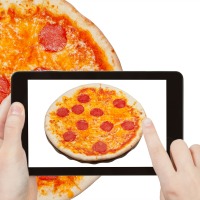![]() We’ve talked about the benefits of beacons previously, and continue to see the opportunities they provide, but one challenge may prevent broad adoption. They are too expensive to install and maintain. Despite being a popular fixture in everything from retail stores to hotels and airports, beacons have not yet lived up to their expectations and at this rate may never will.
We’ve talked about the benefits of beacons previously, and continue to see the opportunities they provide, but one challenge may prevent broad adoption. They are too expensive to install and maintain. Despite being a popular fixture in everything from retail stores to hotels and airports, beacons have not yet lived up to their expectations and at this rate may never will.
Recently, beacons have been evolving in use with more retail stores like Sephora, Macy’s and Target employing them in test locations. But sending out messages to users while in store has been a challenge as shoppers move fast and it can be tricky to capture them in the right department to send the right message or deal to their smartphone. And any beacon usage requires the user to both have your application installed and also have Bluetooth communications enabled.
Price is a Drawback
The biggest problem of beacons so far could be cost. Currently, the hardware to set up the infrastructure is pricey and the maintenance upgrades are an additional fee.
According to Sonia Nagar, vice president of product and head of mobile apps at RetailMeNot: “Beacon technology has a ton of hype but the infrastructure is expensive, they require maintenance and consumers don’t want to turn Bluetooth on at scale”.
Large enterprises can easily absorb these costs, but small businesses may find this a barrier to adoption. Additionally, retailers need to consider the deployment and maintenance costs over each distributed location,
Is Magnetic Positioning the Solution?
Magnetic positioning is a new technology that does not require beacons thus eliminating the costliest feature. Instead, it relies on mapping the magnetic footprint of a building or store, which is a one-time only cost. Unlike beacons, there are no batteries to replace or upgrades to complete. Magnetic positioning works with sensor data from a user’s smartphone tracking them wherever they are. This provides a contextual advantage over beacons.
Plus, unlike beacons that require iOS users to turn on Bluetooth, magnetic positioning can locate any smartphone within range. By reducing this invisible barrier, the retailer is one step closer to reaching the consumer.
Whether or not magnetic positioning succeeds in replacing beacons, we know is that the future is ripe for location-based technology in retail and more. What we have seen so far is the beginning of an exciting future for brands and marketing.
Interested in the latest in mobility developments with beacons and beyond? Sign up for our email list.






